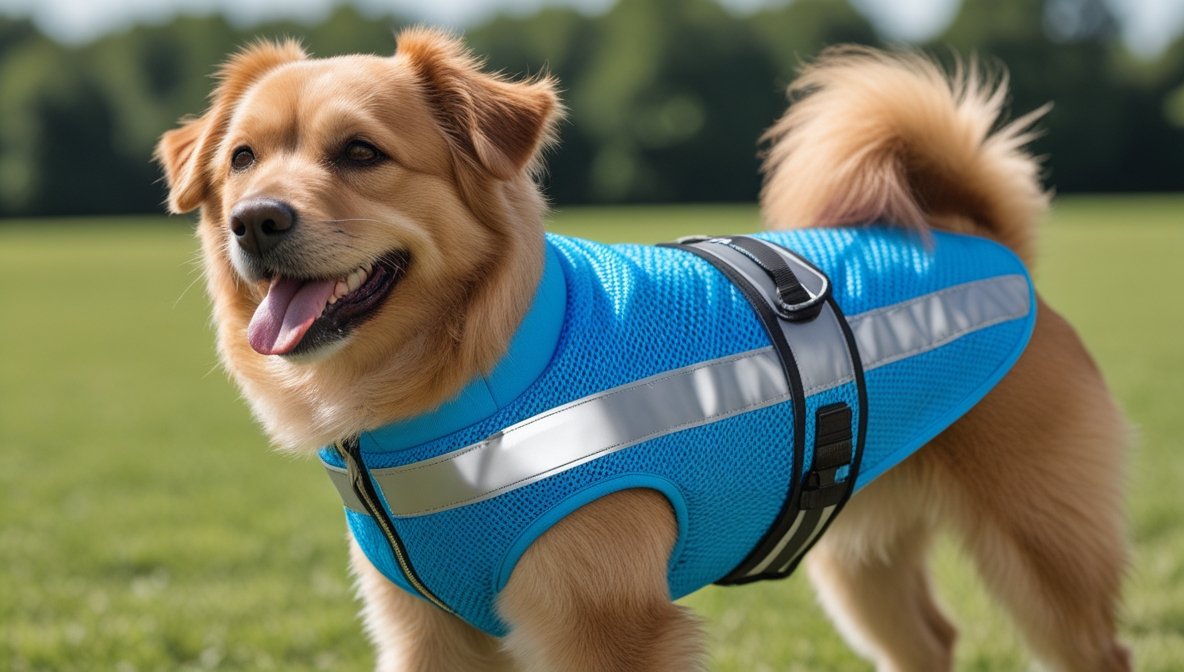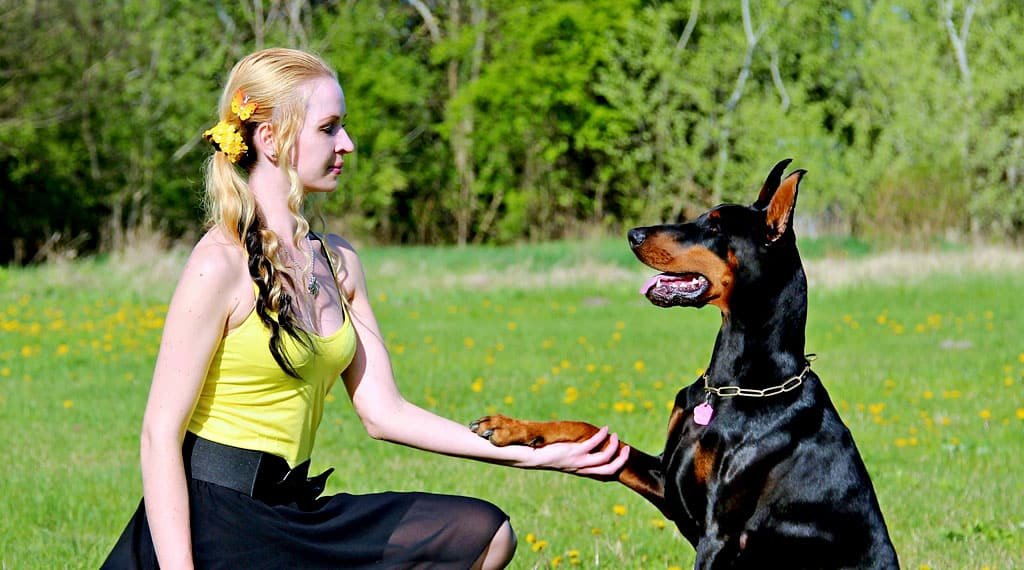Exercising with your dog is a win-win for both of you. Not only does it keep your canine companion fit, but it also boosts your own physical and mental health. When you lace up your sneakers and hit the trail with your dog by your side, you tap into a host of benefits: you burn calories, strengthen muscles and bones, reduce stress, and form an unbreakable bond with your pet. Studies consistently show that dog owners tend to be more physically active and healthier than non-owners. In fact, one health survey found that people who walk or run with their dogs are more likely to achieve the recommended daily exercise than those without dogs. This introduction to the benefits of exercising with your dog will explore how working out together can improve cardiovascular fitness, mood, weight management, and even your dog’s behavior. It will also offer tips on fun activities and staying safe Benefits of Exercising with Your Dog

Table of Contents
Physical Health Benefits of Exercising with Your Dog
Exercising with your dog gets both hearts pumping. Dog walking and play count as aerobic exercise, which strengthens your cardiovascular system. Research shows that dog owners report higher levels of regular physical activity than those who don’t own pets. Simple, daily walks or jogs can improve your blood flow, muscle tone, and endurance. For example, adults who walk their dogs at least 30 minutes a day have better blood pressure, healthier blood sugar, and lower risk of heart disease compared to those who don’t. In one study, people who regularly walked their dogs were significantly less likely to be obese than non-dog owners. Likewise, an analysis of many studies found that pet owners (mostly dog owners) have higher frequency of exercise and activity than non-pet owners Benefits of Exercising with Your Dog
- Foldable, portable, and durable
- 18′ long and 24″ diameter
- Carrying bag included
Shorter, daily bursts of movement also add up. The American Heart Association recommends at least 150 minutes of moderate exercise per week (about 30 minutes a day). AKC’s FIT DOG program encourages dog owners to commit to these 150 weekly minutes by walking their pups. Participants in this program report weight loss, increased energy and improved mental health from these walks. In other words, a brisk walk or run with your dog can burn calories and tone muscles just as well as time on the treadmill.
- Improved cardiovascular fitness: Brisk walking, running, cycling, or swimming with your dog raises your heart rate, which strengthens your heart and lungs over time.
- Weight management: Regular dog walks help burn fat. A British study noted that dog walkers had healthier weights and diets than non-walkers.
- Stronger muscles and bones: Activities like hiking or chasing your dog engage leg and core muscles. Exercise also stimulates bone density. Over time you’ll notice muscles feeling stronger and movements easier.
- Better metabolic health: Physical activity with your dog can improve insulin sensitivity and blood sugar control, reducing risk of type 2 diabetes and other metabolic conditions.
“Walking your dog not only benefits your pet’s health, but also yours,” notes a Mayo Clinic report – people who exercise regularly with their dogs enjoy lower blood pressure, reduced risk of heart disease, and better bone health. Even when the exercise is mild, like a daily stroll, it adds up: just 30 minutes of moderate dog-walking can reduce coronary heart disease risk and aid weight control. Over months, those extra outings may let you stay ahead of weight gain and keep your joints more flexible Benefits of Exercising with Your Dog
Regular walks are easy on the body and work wonders for fitness. The image above shows dog owners walking a Labrador together – a simple daily walk can build endurance and help both you and your pet maintain a healthy weight.
Mental and Emotional Benefits
Beyond physical health, exercising with your dog has powerful mental and emotional benefits. Staying active releases endorphins – natural “feel-good” chemicals – which lift mood and reduce stress for both human and dog. In fact, one dog-owner guide explains that having a “furry workout buddy” makes exercise more fun and helps you stay motivated. Your dog’s happy enthusiasm can be contagious: when they’re eager for a walk or play, you’ll be more likely to follow through on your fitness plans Benefits of Exercising with Your Dog
Exercise also combats anxiety and depression. Spending time outdoors with your pet exposes you to fresh air and sunlight, which can improve sleep and mood. Mayo Clinic notes that dogs force their owners to get moving – and this movement strengthens the nervous system and mental health. Studies have found that pet owners report lower anxiety and less loneliness thanks to daily dog-walking and social interaction. For example, dog owners tend to interact more with neighbors or other pet owners on walks, which builds social bonds and reduces feelings of isolation. This boost in social activity can improve mental wellness and even sharpen memory over time Benefits of Exercising with Your Dog
Key mental health perks include:
- Reduced stress and anxiety: Regular dog walks interrupt sedentary routines and give a mental break. Endorphins from exercise lower stress hormones. One pet guide notes that exercise together “helps alleviate stress and anxiety in both you and your dog.”.
- Better mood: Physical activity increases serotonin and dopamine, improving mood. The companionship of a happy dog further brightens outlook – after a good run with your pup, you’re likely to feel calmer and more content Benefits of Exercising with Your Dog
- Consistent routine: Dogs thrive on routine, so owners often build workouts into their schedule. Establishing this habit means you’re more likely to meet daily exercise goals, which benefits mental clarity and energy.
- Brain health: Exercise increases blood flow to the brain, which can sharpen focus and memory. As one article puts it, walks “provide mental stimulation [and] help keep minds sharp” for both species.
Benefits for Your Dog
Of course, the main beneficiary of dog-oriented exercise is your pet. Dogs need activity to stay healthy – for many breeds, exercise is essential for preventing health issues. Regular walks, playtime, or training sessions help your dog maintain a healthy weight, strong muscles, and good joint function. Without enough activity, dogs can become prone to obesity, arthritis, and mobility issues. Exercise also strengthens their heart and lungs, improving stamina. For senior dogs or those with arthritis, low-impact activities like gentle swimming can ease joint pain while keeping them moving Benefits of Exercising with Your Dog
- Physical health: Daily exercise helps dogs burn calories and build muscle. It prevents obesity, which in dogs can lead to diabetes and heart problems. One pet wellness article explains that proper exercise “promotes a healthy metabolism, strengthens muscles and bones, and improves cardiovascular health” in dogs Benefits of Exercising with Your Dog
- Behavior and temperament: A well-exercised dog is usually a calm, well-behaved dog. Physical activity taps into a dog’s natural energy, preventing boredom that can cause chewing, digging, or excessive barking. As Airrosti notes, exercise “helps curb common behavioral problems such as chewing, barking, and digging”. In practice, a tired dog is far less likely to get into mischief. Pet experts say, “a tired dog is a contented dog” – regular exercise can prevent restlessness, anxiety, and destructive behaviors Benefits of Exercising with Your Dog
- Mental stimulation: Dogs are naturally curious and need mental challenges. Exercise – especially in a new environment or with games – stimulates their mind. Exploring on walks lets them sniff different scents and sight-see, which keeps their brain engaged. Studies suggest that mental enrichment (through exercise and play) can slow cognitive decline in aging dogs. Even 30-60 minutes of active time per day can keep an adult dog physically fit and mentally sharp Benefits of Exercising with Your Dog
Together, these benefits mean your dog will be healthier and happier. Pets with daily exercise tend to have better sleep, more confidence, and fewer stress-related health issues. They also tend to socialize better with other dogs and people, since a playful park outing or group walk gets them used to distractions and company Benefits of Exercising with Your Dog
Strengthening the Human–Dog Bond
Exercising with your dog isn’t just about fitness; it’s also quality time. Engaging in activities together deepens your relationship and mutual trust. When you play fetch, jog through the neighborhood, or even practice obedience training during walks, you communicate and cooperate – building a stronger bond. As one pet source notes, shared exercise “provides an opportunity for quality time together, enhancing your relationship and building trust.”.
- Communication and training: Exercise time can double as training time. Playing games like agility or fetch reinforces commands (sit, stay, fetch) in a fun way. This positive interaction solidifies your leadership role and your dog’s obedience.
- Social bonding: Dogs are pack animals. When you include them in your daily routine, they feel like part of the family pack. Even calm activities like slow-paced walks allow you to observe and respond to your dog’s needs, strengthening mutual understanding Benefits of Exercising with Your Dog
- Emotional support: The simple act of being together during exercise provides emotional comfort. Your dog learns to rely on you for fun and care, and you experience unconditional companionship. Over time, these shared experiences create joy and memories, making both you and your pet happier Benefits of Exercising with Your Dog
Humans benefit just as much emotionally. After a long day, heading out for a run with your dog can lift your spirits and leave both of you feeling refreshed. Your dog’s enthusiasm and loyalty turn exercise “chore” into a bonding ritual. Plus, being outdoors together can be a natural mood-lifter – the sights, sounds, and even the shared laughter or excitement (when your pup chases a ball) all contribute to a more positive day Benefits of Exercising with Your Dog
Fun Activities to Try with Your Dog
There are countless ways to exercise together, so you can pick what fits your lifestyle and your dog’s energy level. Variety keeps both of you engaged. Here are some popular options:
- Walking or Hiking: The simplest form is a daily walk. Try varying your route and pace – a brisk walk or jog on a trail can challenge both of you. Hiking adds an extra challenge: uneven terrain and hills raise your heart rate, and your dog enjoys new smells and sights. Always bring water and be mindful of paw safety on rough paths Benefits of Exercising with Your Dog
- Jogging/Running: Once your dog is fit, consider jogging or running together. Gradually increase distance and pace. Breeds like Labs and shepherds can be great running partners. Always start slow – as one dog-exercise guide says, “start slow and gradually increase the intensity”.
- Swimming: Many dogs love water. Swimming is an excellent low-impact cardio exercise. It’s gentle on joints (great for dogs or owners with arthritis) and works muscles all over. Public lakes, beaches, or dog-friendly pools are options. Always supervise water play and consider a doggy life vest for safety Benefits of Exercising with Your Dog
- Cycling: For high-energy dogs, running alongside your bicycle can be a workout. Use a special bike leash or trailer attachment. Train your dog on a quiet street or trail first. Don’t sprint – keep a steady pace that matches your dog’s gait. This combo can let you cover more ground than walking. Always use a sturdy, non-retractable leash and harness to keep your dog safe and avoid neck strain.
- Agility and Dog Sports: Set up a simple obstacle course in your yard or join a local class. Hurdles, weave poles, tunnels and more can give both of you an intense workout. Dog sports like agility, flyball, or even canine disc (Frisbee) turns exercise into play. These sports improve your dog’s coordination and provide a mind-body workout for you both.
- Fetch and Tug Games: A game of fetch in an open area can tire your dog out quickly while you jog to retrieve the ball. Tug-of-war with a sturdy toy lets your dog use strength and focus (ensure your dog lets go on cue to keep it friendly). These games build muscle, burn energy, and are simply fun bonding activities.
- Dog Yoga (“Doga”) or Training Classes: For a calmer session, try gentle stretching or even doggy yoga routines. Some studios offer “doga,” which is yoga you do alongside your dog. This is more about flexibility and relaxation, but the eye contact and quiet focus can deepen your connection Benefits of Exercising with Your Dog
- Indoor Games: Bad weather? Play indoor exercises like hide-and-seek (hide treats or toys around the house) or set up a mini obstacle course with cushions. Even sprinting up and down stairs together can be great exercise. Interactive toys (puzzle feeders, snuffle mats) keep your dog moving and thinking Benefits of Exercising with Your Dog
- Foldable, portable, and durable
- 18′ long and 24″ diameter
- Carrying bag included
The key is to match activities to your dog’s breed and energy level. A Border Collie might be up for long runs and agility courses, while a Bulldog might prefer short walks and swimming. Mix it up to keep things interesting. Your vet or a professional trainer can advise on what’s appropriate for your dog’s age and health Benefits of Exercising with Your Dog
Tips & Safety Considerations
Before embarking on any new exercise routine with your pup, safety first.
- Check Your Dog’s Health: Visit the vet for a pre-exercise checkup, especially for puppies, seniors, or dogs with known health issues. Make sure vaccinations and parasite preventatives (flea, tick) are up to date, particularly if you’ll be hiking or in wooded areas Benefits of Exercising with Your Dog
- Warm Up and Cool Down: Start with a gentle pace. A few minutes of walking before running or playing helps your dog’s muscles get ready. After exercising, let your dog slow down gradually. Stretch your legs and allow them to rest and hydrate.
- Stay Hydrated: Always bring water for both of you, especially on hot days or long outings. Offer small drinks frequently. Dehydration is as dangerous for dogs as for humans Benefits of Exercising with Your Dog
- Avoid Extreme Weather: Don’t exercise when it’s too hot or humid; dogs can overheat easily (pugs and bullies are especially sensitive). In cold weather, short-haired breeds may need a coat. Early morning or late evening walks avoid midday sun. If the pavement is too hot for your hand, it’s too hot for your dog’s paws.
- Use Proper Gear: A well-fitted harness is often safer than a collar for exercise, preventing strain on your dog’s neck. Use a sturdy leash that won’t snap. For high-intensity running or biking, consider a hands-free leash system for stability.
- Train Gradually: Build up distance and time slowly. A sudden long run can injure muscles or joints in both of you. As the AKC warns, “you have to build them up to it … get their paws acclimated, their heart, everything.”. Start with short sessions and increase by only 10-20% per week Benefits of Exercising with Your Dog
- Watch for Fatigue: Learn your dog’s signals for tiredness – excessive panting, lagging behind, or limping. Take breaks as needed. Never force your dog to continue if they are exhausted or in pain. If you notice any limping or distress after exercise, let them rest and consult your vet if it doesn’t improve Benefits of Exercising with Your Dog
- Consider Breed and Age: Puppies have growing bones, so limit high-impact exercise until fully grown. Senior dogs or those with arthritis may need softer activities like swimming or shorter strolls. Tailor the intensity to your dog’s age and breed energy level.
By exercising smartly, you ensure a positive experience that keeps both of you safe and healthy.
Frequently Asked Questions
Q: How often should I exercise with my dog?
A: Most healthy adult dogs benefit from at least 30 minutes to 2 hours of activity daily, depending on breed and age. This can be split into multiple walks or play sessions. For example, three 20-minute walks spread throughout the day meet the exercise needs of many breeds. Puppies require shorter, gentler playtimes and walks. Listen to your dog’s energy – if they seem restless or start showing behavioral issues, they probably need more exercise. It’s better to do a bit every day rather than a long session once a week Benefits of Exercising with Your Dog
Q: Can I jog or run with my dog?
A: Yes, but start slowly. Before jogging with your dog, ensure they are physically mature (typically over a year old) and cleared by the vet. Begin with short, easy runs at a pace your dog enjoys. Gradually increase distance and monitor them closely. Use a non-retractable leash and a harness. Not all dogs suit running – high-energy breeds usually take to it best. If your dog has breathing problems (e.g., flat-faced breeds), avoid high-intensity runs.
Q: My dog is older/overweight/young – what exercises are appropriate?
A: For older or arthritic dogs, low-impact activities are best: leisurely walks, slow swimming, or gentle play. Keep sessions short and avoid steep hills. Overweight dogs should start with very light exercise (short walks on soft ground) and very gradually build up; combine exercise with a vet-recommended diet. Puppies have a lot of energy but need short bursts of activity because their bones are still developing. Play fetch or short walks when they’re 3–4 months old, but avoid high jumps or long runs until they are fully grown. Always watch each dog individually and adjust as needed Benefits of Exercising with Your Dog
Q: What should I bring on dog exercise outings?
A: Essentials include water (and a bowl), poop bags, and dog-friendly first-aid items (like bandages). On hikes, bring snacks for both of you. In summer, consider a portable shade or cooling vest for your dog. Always carry identification tags. For swimming adventures, bring a canine life jacket if your dog isn’t a strong swimmer. And don’t forget treats and waste bags – leaving no trace keeps trails open to dogs Benefits of Exercising with Your Dog
Q: How do I keep exercise interesting for my dog?
A: Dogs love variety. Mix up routes and activities: try a new park, play a different game (frisbee one day, hide-and-seek with treats the next), or invite dog friends on a group walk. Training games that involve commands and movement can also tire them out mentally. Rewards (treats or praise) during exercise make it engaging. Most importantly, your enthusiasm is contagious – if you treat the activity as fun, your dog will too Benefits of Exercising with Your Dog
Conclusion
The benefits of exercising with your dog are manifold: you get fitter, sleep better, and feel more connected, while your dog stays healthy, happy, and well-behaved. Whether it’s a brisk morning jog, an afternoon hike, or a playful fetch session, every bit of activity counts for both of you. By making exercise a regular part of your routine, you’ll support each other’s well-being and create lasting memories. So grab the leash, choose an activity that suits you both, and start enjoying the many rewards of staying active together. Your heart, your dog’s heart, and your bond will all be the stronger for it Benefits of Exercising with Your Dog
Source: Health experts and pet organizations agree on these advantages. Always tailor exercise to your dog’s needs, and consult your veterinarian with any concerns. Happy exercising and tail-wagging Benefits of Exercising with Your Dog













